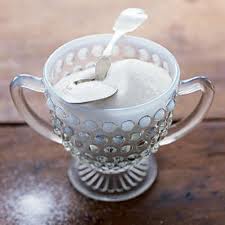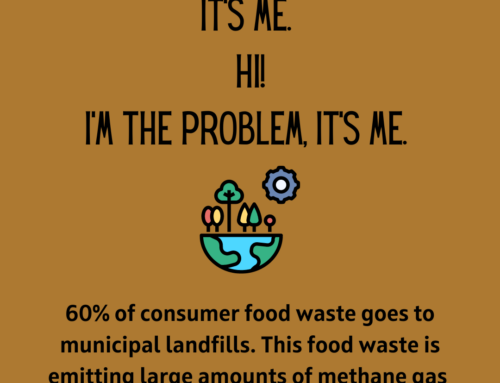There continues to be a lot of buzz lately about how much sugar is okay, and how much is too much. A CBS 60-Minutes show reporting about “Is Sugar Toxic” stirred up a lot of discussion. There was a lot to consider in this television piece. Some of the research is compelling, but all of the results shouldn’t be taken out of context.
One aspect of the 60 Minutes video that I found interesting was the test for sugar’s affect on brain. The subject was given a drop of sugary syrup on his tongue and then his brain was scanned. The scan showed that the pleasure center of the brain was immediately stimulated. The researcher then suggested that this is what sugar does to us. There’s current research working to better understand the differences in taste preferences between lean, healthy individuals and obese ones, and I also wonder what other sorts of non-sugar, yet pleasurable foods, may elicit a similar response on a brain scan.
From Moderation to Extremes

Of course, too much sugar can lead to undesirable risk factors for heart disease – it won’t only add unneeded calories to your diet potentially causing weight gain, but sugar itself can raise triglyceride levels in some people. This has been known. There’s also some truth to the idea that as the food industry responded to “low fat food”, they simultaneously replaced fat with more sugar. Not good.
Does this make sugar “toxic” however? I don’t believe so. The term toxic brings to mind poisons. Sugar isn’t poison. Lots of substances are harmful in large amounts. You could die if you ingested too much potassium. Does that mean you should stop eating bananas? No. I tend to take other sides when it comes to this debate.
Dietary Guidelines
There are folks who don’t believe a thing the United States Department of Agriculture says, and instead believe that the food industry is in their pockets. I’m not that paranoid about them – I think they are a reputable body of professionals who collaborate with peer-reviewed institutions and researchers to come up with guidelines for our general population, that generally are sound. According to the USDA (www.choosemyplate.gov), sugar should be consumed in moderation using “discretionary calories”. That is, these are calories you don’t really need for health. The USDA suggests that 100-300 calories of added sugars a day is okay (which is about 5-15% of daily calories, depending on your energy needs). Since sugar provides 4 calories per gram, 200 calories of sugar would equal 50 grams.
Other sources (World Health Organization, American Heart Association) suggest anywhere from 4-10% of our daily calories as sugar. This is about 100 calories for women, and 150 for men.
Sources of Sugar
There are lots of sources of sugar in our diet, and most of us love a sweet treat. Also, according to the 2010 Dietary Guidelines for Americans, sugar is listed as one of the food components to “reduce” (along with sodium, saturated and trans fats, and cholesterol). To quote the DGAs:
“Sugars are found naturally in fruits (fructose) and fluid milk and milk products (lactose). The majority of sugars in typical American diets are sugars added to foods during processing, preparation, or at the table. These “added sugars” sweeten the flavor of foods and beverages and improve their palatability. They also are added to foods for preservation purposes and to provide functional attributes, such as viscosity, texture, body, and browning capacity…Added sugars contribute an average of 16 percent of the total calories in American diets. Added sugars include high fructose corn syrup, white sugar, brown sugar, corn syrup, corn syrup solids, raw sugar, malt syrup, maple syrup, pancake syrup, fructose sweetener, liquid fructose, honey, molasses, anhydrous dextrose, and crystal dextrose.”
Parents – Should You Set Limits for Your Children?
Yes. Sugar tastes good but it doesn’t provide any of the important nutrients that children need to grow and stay healthy. It also can rack up the calories. There are many misconceptions about how much sugar children take in, and where it’s coming from. For instance, many consumers may perceive that children get their sugar from sugary drinks and at school or away from home. Not true.
A recent National Health and Nutrition Examination Survey (NHANES – a continuous examination of a cross-section of the American population) reported the sugar patterns of the population. The report concluded that food contributed more of the added sugar calories than beverages (59% and 41% respectively) and that more of the sugar calories were consumed at home, not away from home. Fifty four percent (54%)of the added sugars calories from beverages were consumed at home, while nearly two-thirds of the added sugars consumed from foods were consumed at home (66%).
The report also showed that boys consumed more sugar daily than girls, (of course boys generally will be requiring and consuming more calories than girls as well, however overall boys consumed 16.3% more calories from sugar than girls). There was no difference in percent of calories from sugar based on poverty income ratios.
Set Limits, Offer Choices
So parents: It’s your job to limit the sugary drinks and sweet snacks at home. Over-restricting however, always backfires. Offer more fresh fruit, cheese and crackers, or lower sugar cereals, for snacks. Slice an apple and some cheddar cheese. Make healthy choices easy, and they’ll eat it.





Welcome to my new blog! Leave a comment or question!
I love your nutrition advice. Are there any sugar substitutes (Splenda, Stevia, etc.) you consider better than others?
Good question Alyssa. Short answer: No.
I’m not a huge fan of artificial sweeteners but I also personally don’t avoid any of them, nor do I choose any one in particular. In terms of sugar – my opinion is it’s a consumption issue – The same can be true for artificial sweeteners. I advocate them is small amounts. I have some concern that folks will start overdosing on artificial sweeteners in sugar’s place.
The most popular sweeteners include:
Aspartame (Equal, Nutrasweet, Sugar Twin)
Acesulfame-K (Sunett, Sweet One)
Saccharin (Sweet & Low, Sweet Twin)
Sucrolose (Splenda)
These sweeteners are all approved as safe by the FDA (Food and Drug Administration) based on an “acceptable daily intake” (ADI). This ADI is intended to be realistic – in fact the levels tested are often 100 times the smallest amount that could cause health concerns.
People who have diabetes certainly benefit from artificial sweeteners – diet sodas or diet beverages, using a packet of sweetener for tea or coffee or on a bowl of oatmeal – but they must still keep in mind that sugar-free doesn’t always mean calorie-free (as in a “sugar free apple pie”).